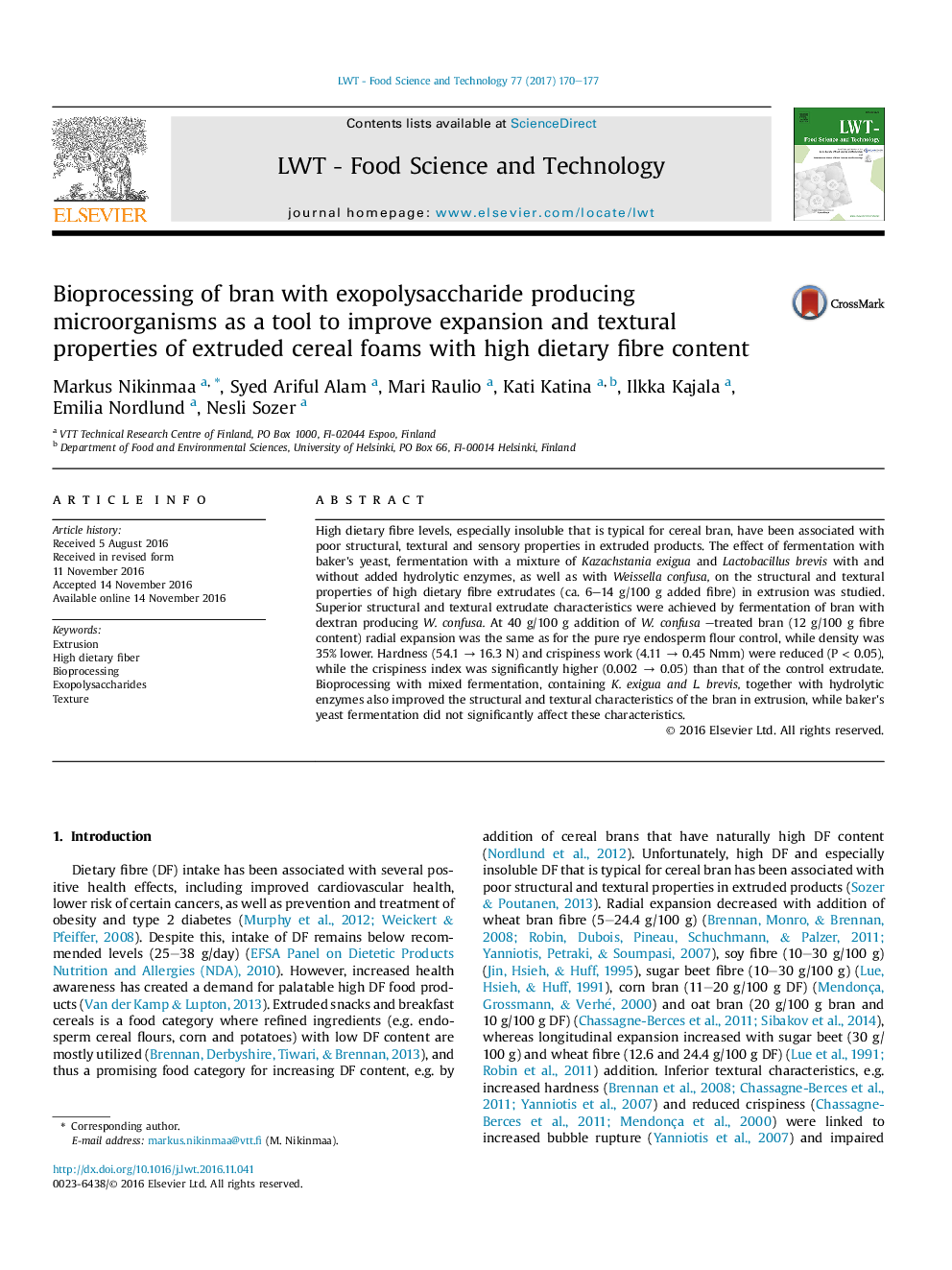| Article ID | Journal | Published Year | Pages | File Type |
|---|---|---|---|---|
| 5768851 | LWT - Food Science and Technology | 2017 | 8 Pages |
â¢Superior expansion and texture was achieved with dextran producing LAB fermented bran.â¢K. exigua and L. brevis with hydrolytic enzymes improved extrudate structure and texture.â¢Only in situ produced dextran improved expansion and texture.
High dietary fibre levels, especially insoluble that is typical for cereal bran, have been associated with poor structural, textural and sensory properties in extruded products. The effect of fermentation with baker's yeast, fermentation with a mixture of Kazachstania exigua and Lactobacillus brevis with and without added hydrolytic enzymes, as well as with Weissella confusa, on the structural and textural properties of high dietary fibre extrudates (ca. 6-14 g/100 g added fibre) in extrusion was studied. Superior structural and textural extrudate characteristics were achieved by fermentation of bran with dextran producing W. confusa. At 40 g/100 g addition of W. confusa -treated bran (12 g/100 g fibre content) radial expansion was the same as for the pure rye endosperm flour control, while density was 35% lower. Hardness (54.1 â 16.3 N) and crispiness work (4.11 â 0.45 Nmm) were reduced (P < 0.05), while the crispiness index was significantly higher (0.002 â 0.05) than that of the control extrudate. Bioprocessing with mixed fermentation, containing K. exigua and L. brevis, together with hydrolytic enzymes also improved the structural and textural characteristics of the bran in extrusion, while baker's yeast fermentation did not significantly affect these characteristics.
